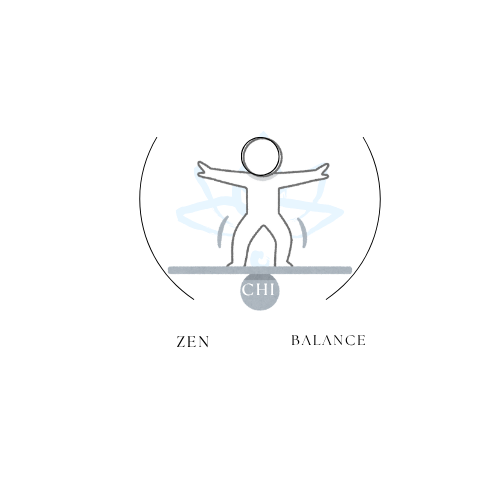
Calm Energy Morning Rituals for Clear Focus and Flow
Share
Updated on: 2025-10-23
Table of Contents
- Why Morning Rituals Help You Ease Into the Day
- Essential Tips for Morning Rituals
- Detailed Step-by-Step Process to Build Morning Rituals
- Summary & Takeaway on Morning Rituals
- Morning Rituals: Frequently Asked Questions
Morning rituals are simple actions you repeat at the start of the day to set a steady tone. When your morning routines feel gentle and dependable, it becomes easier to focus, follow through, and feel grounded. Thoughtful AM routines can support a calm start, help you transition from rest to action, and give you a small sense of control before the day grows busy. This guide offers a kind approach, with practical steps and ideas for morning meditation, morning affirmations, and other light habits that fit different lifestyles.
Essential Tips for Morning Rituals
These suggestions are designed to make your morning rituals easier to start and easier to keep.
- Begin very small: A two-minute action done most days often helps more than a 30-minute plan that fades.
- Stack habits: Attach a new action to something you already do, such as brewing tea or opening the curtains.
- Prepare at night: Lay out clothes, set out a water glass, or place a notebook on the table so the morning feels simple.
- Use gentle cues: A soft chime or a sunrise light can be a kind nudge toward your AM routines.
- Keep tools visible: If you want to read, put the book on your pillow; if you plan morning meditation, place the mat or chair where you will see it.
- Protect the first minutes: Consider a short phone-free window to let your mind arrive before notifications.
- Be flexible: If you sleep less or have an early commitment, shorten your ritual rather than skip it.
- Pick a mood and a purpose: Decide how you hope to feel after your routine—calm, focused, or energized—and choose actions that support that feeling.
- Celebrate tiny wins: A small checkmark, a smile, or a mindful breath can make the habit more rewarding.
- Review weekly: Adjust your morning routines as your life changes; a good routine evolves with you.
For more gentle habit ideas and supportive resources, you may find the blog helpful.
Detailed Step-by-Step Process to Build Morning Rituals
This approach is designed to be practical and steady. It may help you move from intention to a ritual that feels natural.
Step 1: Clarify your purpose
Write one sentence about why you want morning rituals. You might aim to feel calmer, to start your day with focus, or to create a steady rhythm. A clear purpose gently guides your choices and helps you say yes to the right habits and no to extras.
Step 2: Choose one anchor habit
An anchor habit is a small action that always happens, no matter what. Examples include drinking a glass of water, opening a window for fresh air, or making your bed. Use this anchor to trigger the rest of your AM routines. If the day is busy, let the anchor be the minimum so you still keep the ritual alive.
Step 3: Add a 3-minute morning meditation
Set a short timer and sit comfortably. Notice your breath moving in and out. If your mind wanders, notice it kindly and return to your breath. Morning meditation can offer a gentle pause before your day gathers speed. Keep it short and simple so it fits your life.
Step 4: Write gentle morning affirmations
Choose one or two statements that feel kind and believable. For example: “I will move through this morning with care” or “I am allowed to start small.” Place them where you can see them. Morning affirmations can direct your attention toward a steady, supportive tone.
Step 5: Plan the first small task
Pick one action that moves something important forward. Keep it small enough to finish in 10 minutes or less. A first task might be drafting a short note, sketching today’s priorities, or clearing your desk. Many find this helps create momentum and supports the best morning rituals for productivity without strain.
Step 6: Shape your environment
Set up your space the night before so your morning rituals are obvious and easy. Place a water bottle on the counter, a journal near your seat, or a meditation cushion by the window. By making the start easy and pleasant, you reduce friction and increase the chance your routine will happen. If you would like to learn more about our approach, the about page shares the values behind our guidance.
Step 7: Track and adjust without judgment
Use a simple checklist or a small calendar to mark each day you complete your anchor and one chosen habit. Note how you feel afterward. If something does not fit, change it kindly. For instance, if you are short on time, try a two-minute version of your morning routines to keep your streak alive.
Step 8: Grow the routine at a kind pace
Once your anchor feels easy, add one more small habit. Perhaps extend morning meditation to five minutes, add a brief stretch, or read a page. Growth can be gradual. The goal is consistency that feels humane, not rigid. This approach helps answer the question, “How do I build a morning ritual that sticks?”—you build it by keeping it small, steady, and enjoyable.
Summary & Takeaway on Morning Rituals
Morning rituals do not need to be long or complex to be meaningful. A few thoughtful minutes can ease you into the day, support focus, and create a balanced mood. The combination of an anchor habit, a short pause for morning meditation, and a kind set of morning affirmations can carry you from rest to motion with less friction.
- Start with one anchor and keep it brief.
- Use visible cues and gentle reminders.
- Plan a small first task to create momentum.
- Adjust the routine as your life shifts.
- Grow slowly so the ritual remains friendly and sustainable.
If you enjoy guided reflections, you may appreciate resources shared on the Zen Chi Balance home page. If you prefer practical articles and gentle how-tos, the blog often covers small, repeatable actions that support AM routines.
Morning Rituals: Frequently Asked Questions
What are the best morning rituals to start the day?
The best morning rituals are simple, repeatable actions that match your goals and energy. Many people find value in an anchor habit (water, light, or a quick tidy), a short moment of morning meditation, and a light planning step such as listing the first task. For a calm focus, a brief breath practice plus one page of reading can also work well. If you seek a steadier mood, gentle movement, natural light, and affirmations may feel supportive. The right mix is the one you can maintain most days.
How do I build a morning ritual that sticks?
Begin small and attach the new habit to something you already do. Reduce friction by preparing the night before, and keep the first steps short so they fit even on busy days. Track your progress with a simple checkmark and adjust without self-judgment. Over time, you can add elements such as morning affirmations or a few minutes of reading. This deliberate, kind approach helps your AM routines become automatic.
How long should a morning routine be?
There is no set length. Many people do well with 10 to 20 minutes for essentials, and then add optional elements when time allows. On rushed days, your anchor habit can be enough. What matters most is how the routine makes you feel and whether you can keep it going consistently.
Are morning rituals for anxiety relief helpful?
While everyone’s experience is different, some people report that simple, predictable steps help them feel steadier. Quiet practices such as breath awareness, gentle movement, and calm light exposure may support a sense of ease. If you are exploring practices that feel grounding, consider a very short morning meditation, a few kind affirmations, and one small task to build momentum. If you would like to reach out or share feedback, our contact page is open.

I'm a passionate curator at Zen Chi Balance, dedicated to spreading calm, harmony, and mindful living through faith-inspired lifestyle products. I help craft meaningful experiences for our global community of mindful shoppers.
The content provided is for informational and inspirational purposes only. It is intended to encourage personal growth, mindfulness, and balance in daily life. Zen Chi Balance does not provide medical, legal, or professional advice. For specific concerns or guidance, please consult a qualified professional. Visit us at www.zenchibalance.com for more inspiration and resources.
